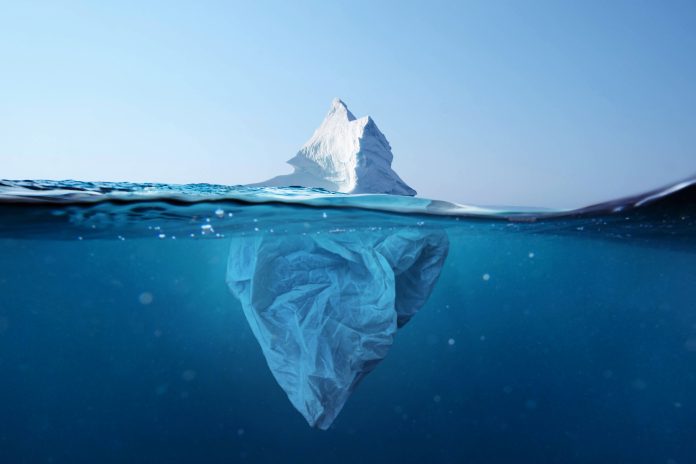Research has identified how microplastics are being found in the Antarctic, by testing seawater samples they found that paint and varnish are the most prominent source of microplastics in the region’s sea
Researchers from the University of Basel and the Alfred-Wegener Institute have studied how the Antarctic, though remote, has been disturbed by the growing plastic pollution problem.
The study was taken at the Helmholtz Centre for Polar and Marine Research on the island of Heligoland, surveying water from the Weddell Sea, which is a region with minimal human activity.
The research team led by Professor Patricia Holm from the University of Basel, and Dr. Gunnar Gerdts from AWI, had hypothesised that the remote Weddell Sea would have considerably lower concentrations of microplastics.
Organisms can ingest these tiny microplastic particles and become harmed by them
The researchers took 34 surface water samples and 79 subsurface water samples, filtering approximately eight million litres of seawater in total.
They discovered small quantities microplastics in the seawater. Though their measurements showed that concentrations are only partially lower than in other regions of Antarctica, they found that paint and varnish were the main source of microplastics.
This indicates that marine paint, and shipping traffic, are likely the primary source of microplastics in the Southern Ocean. Shipping traffic in the Southern Ocean has increased over the years, primarily due to increased tourism and fishing, but also due to research expeditions like this one.
Publishing their results in the journal Environmental Sciences and Technology, the researchers first examined the plastic composition of the particles filtered out of the seawater. They found that 47% of the particles identifiable as microplastics were made of plastics that can be used as a binding agent in marine paint.
Other microplastic particles identified were polyethylene, polypropylene, and polyamides, used in packaging materials and fishing nets, and other marine-related substances. It was stated that although researchers were able to determine the different plastics used, the exact origin or previous application of the microplastic fragments is not known.
Former studies of Antarctic microplastics were conducted in regions with more research stations, shipping traffic and people, therefore finding more microplastics in these areas, but this study wanted to identify microplastics in a remote region to exemplify how far the problem has spread.
Clara Leistenschneider, doctoral candidate in the Department of Environmental Sciences at the University of Basel said: “Establishing that microplastics are present in a given region is one thing, but it’s also important to know which plastics appear, in order to identify their possible origin and in the best case to reduce microplastic emissions from these sources.”
“This is one of the first studies of this scope to be conducted in Antarctica”
In this study, over half of all sample fragments had visual characteristics like the ship paint on the research vessel Polarstern, on which the team was travelling. The analysis showed that 89% of the 101 microplastic particles studied in detail originated from the Polarstern. The remaining 11% came from other sources.
The researchers studied these fragments in detail by means of X-ray fluorescence to identify pigments and fillers, as the commonly used method – Fourier transform infrared microscopy (FT-IR) – could not identify these substances.
As well as binding agents, these fragments are an important component of paint, and are analysed in forensics, along with their plastic content, to identify, for example, cars in hit-and-run accidents. Paint slivers left at the accident site are known as the “vehicle’s fingerprints”.
Leistenschneider commented: “A number of comparative methods must be used to determine the origin of paint particles. Developing alternative marine paint that is more durable and environmentally friendly would make it possible to reduce this source of microplastics and the harmful substances they contain.”
It was stated that this was the only way to precisely classify paint fragments found in the environment from contamination due to the Polarstern.











